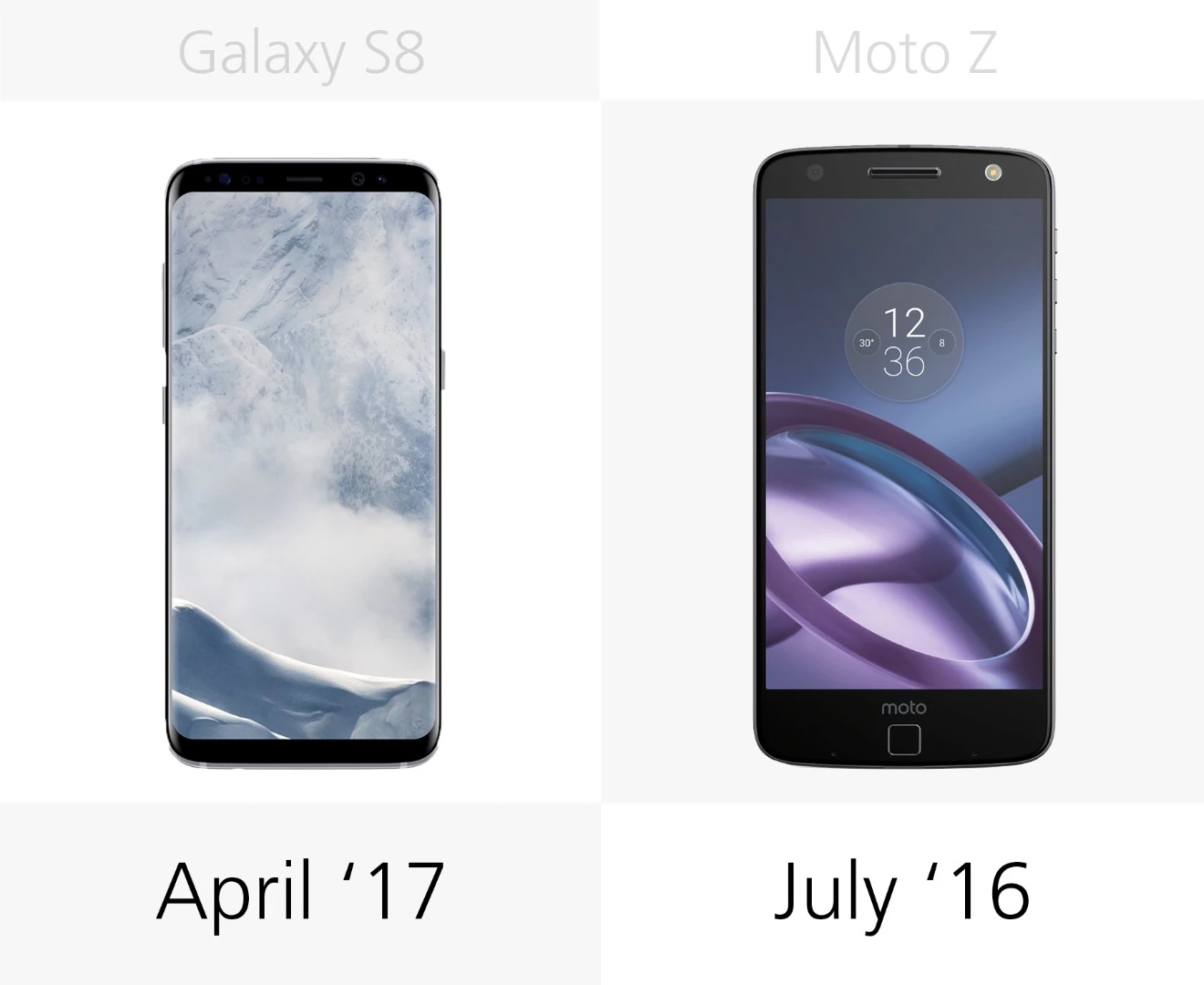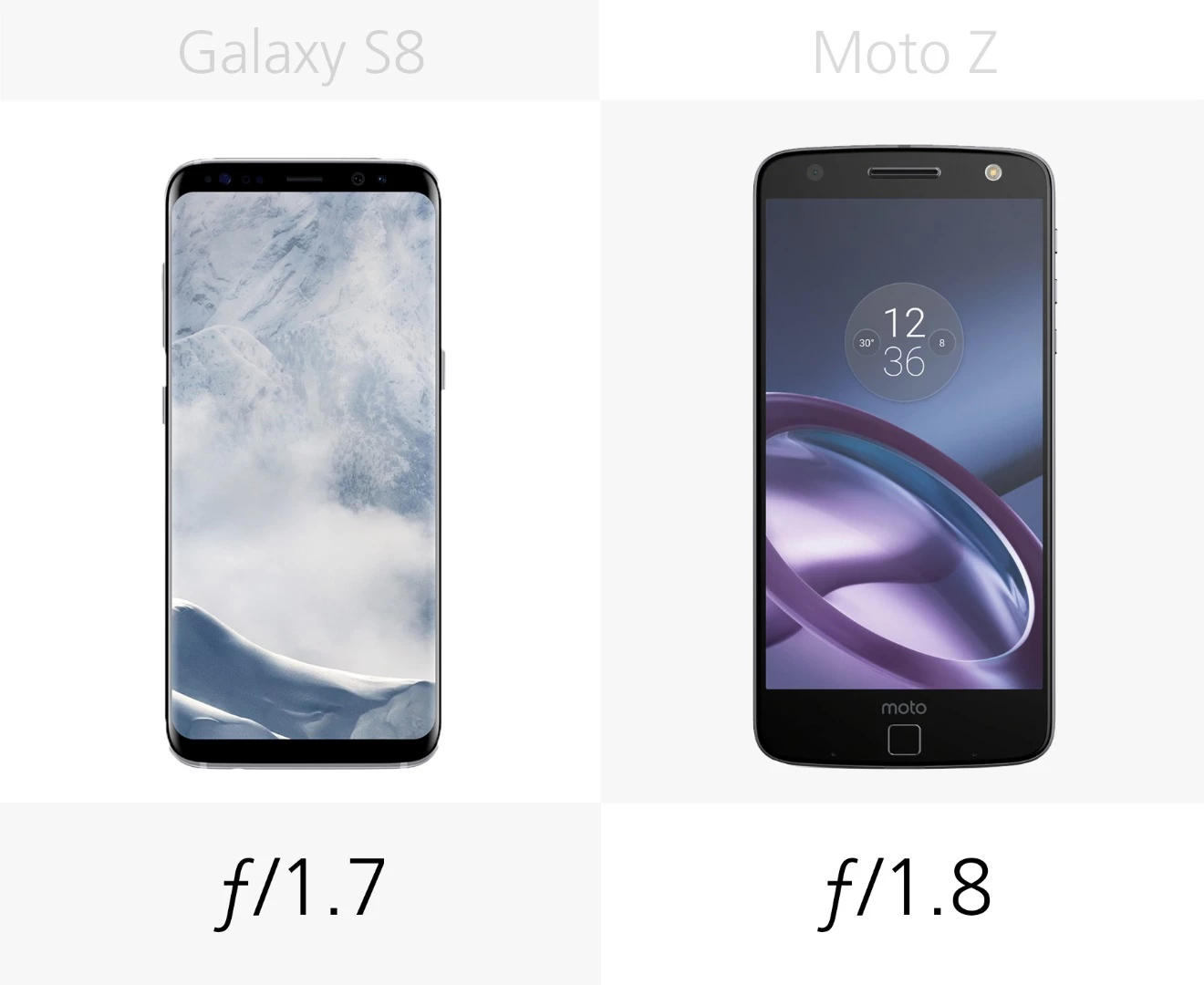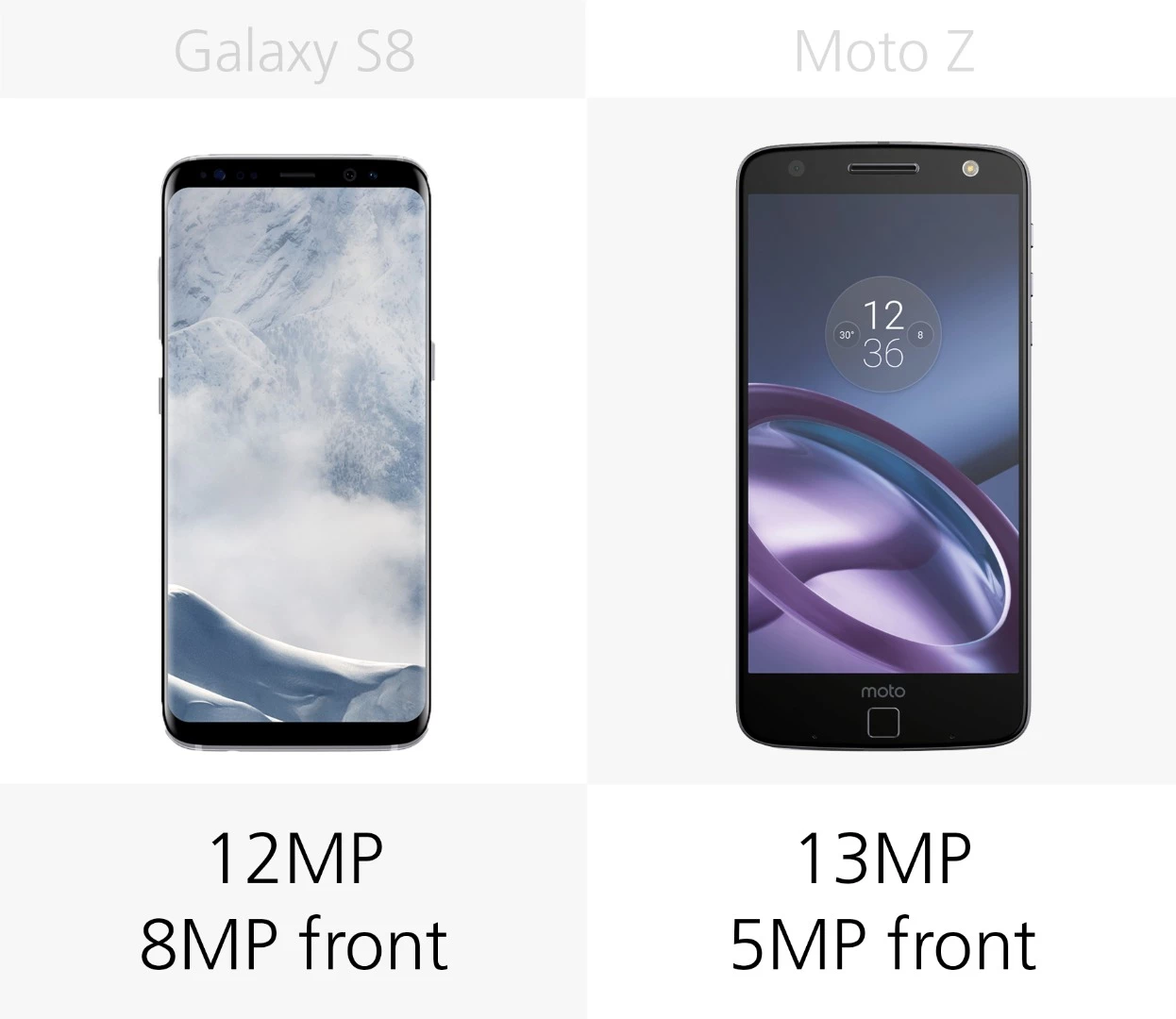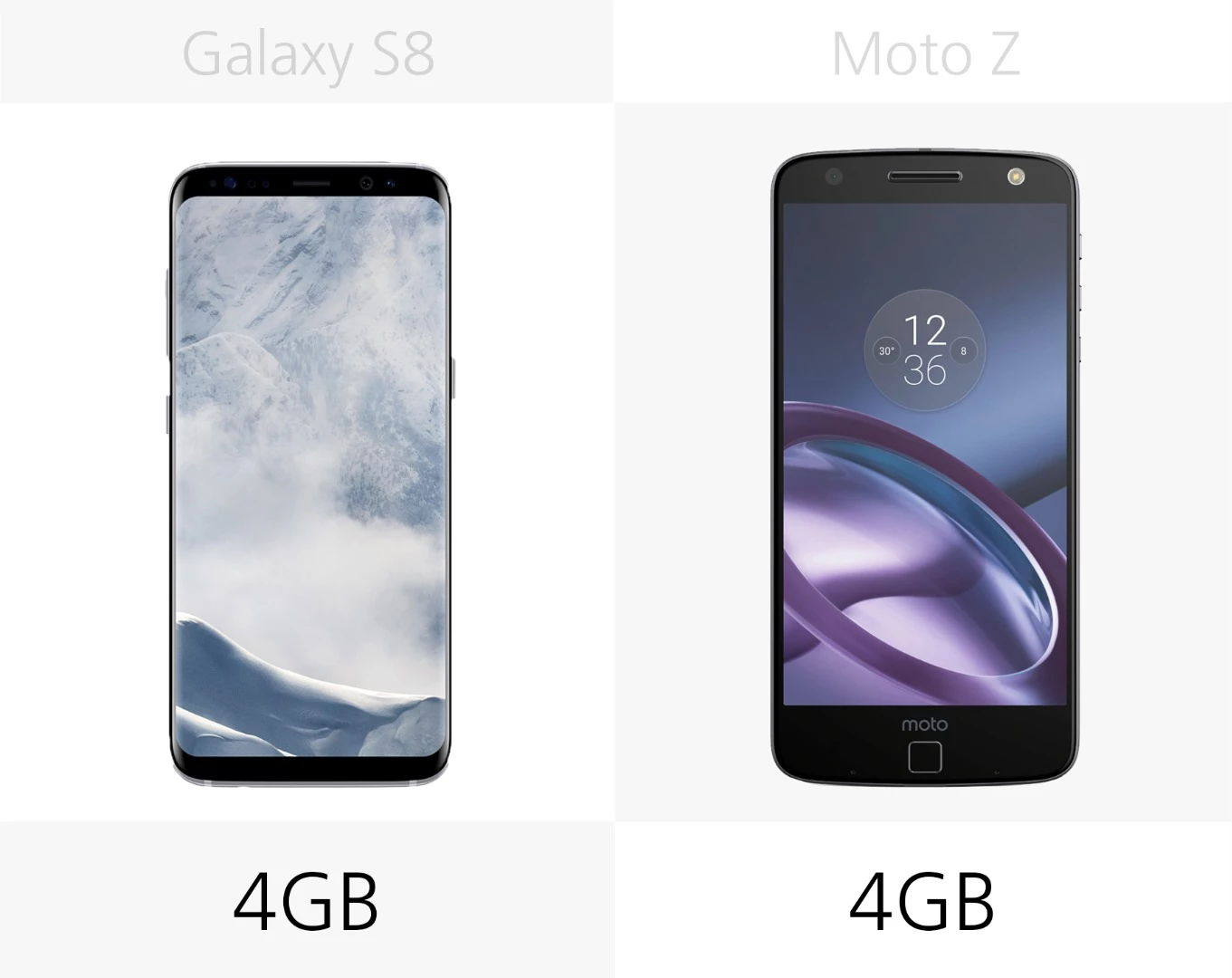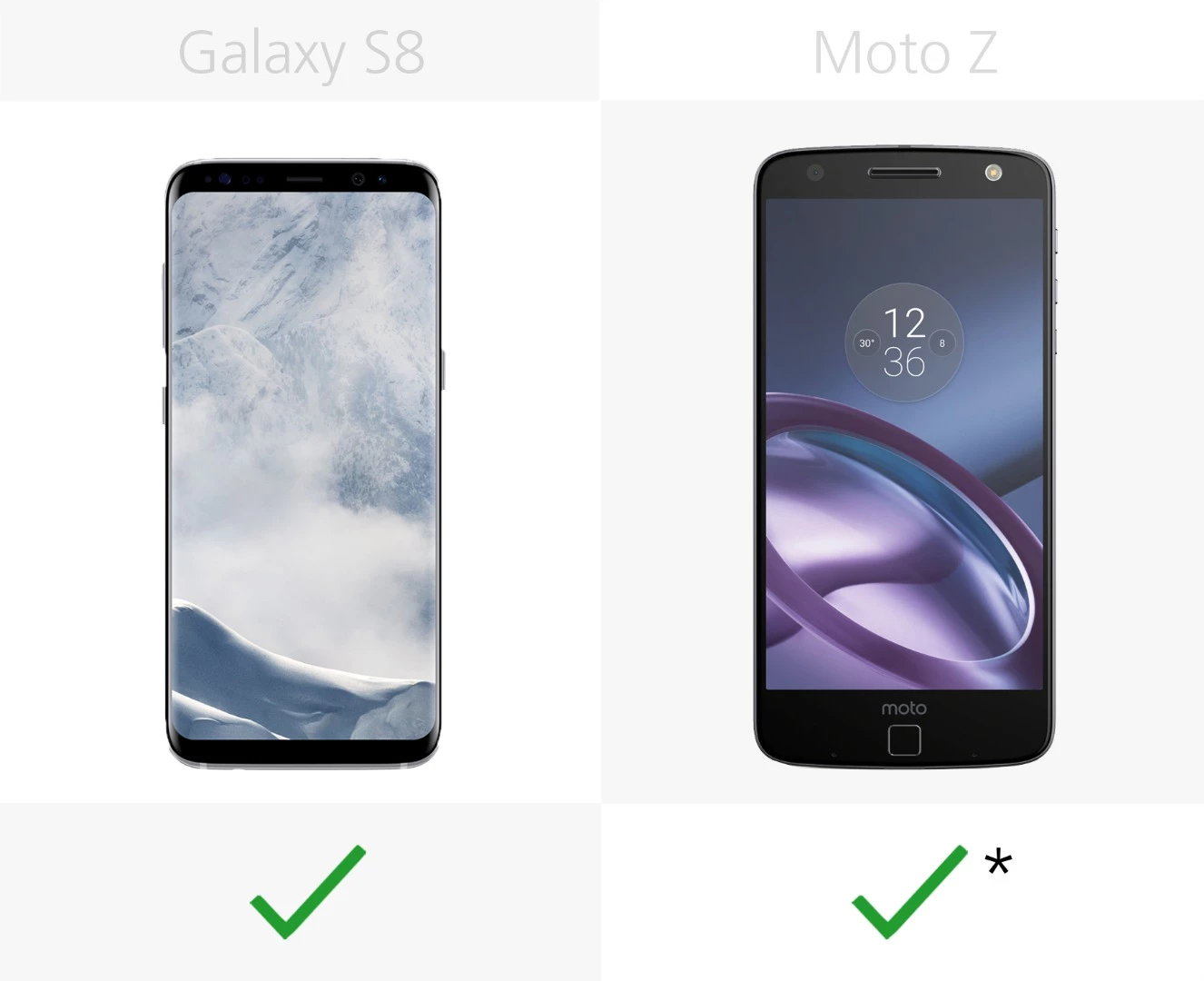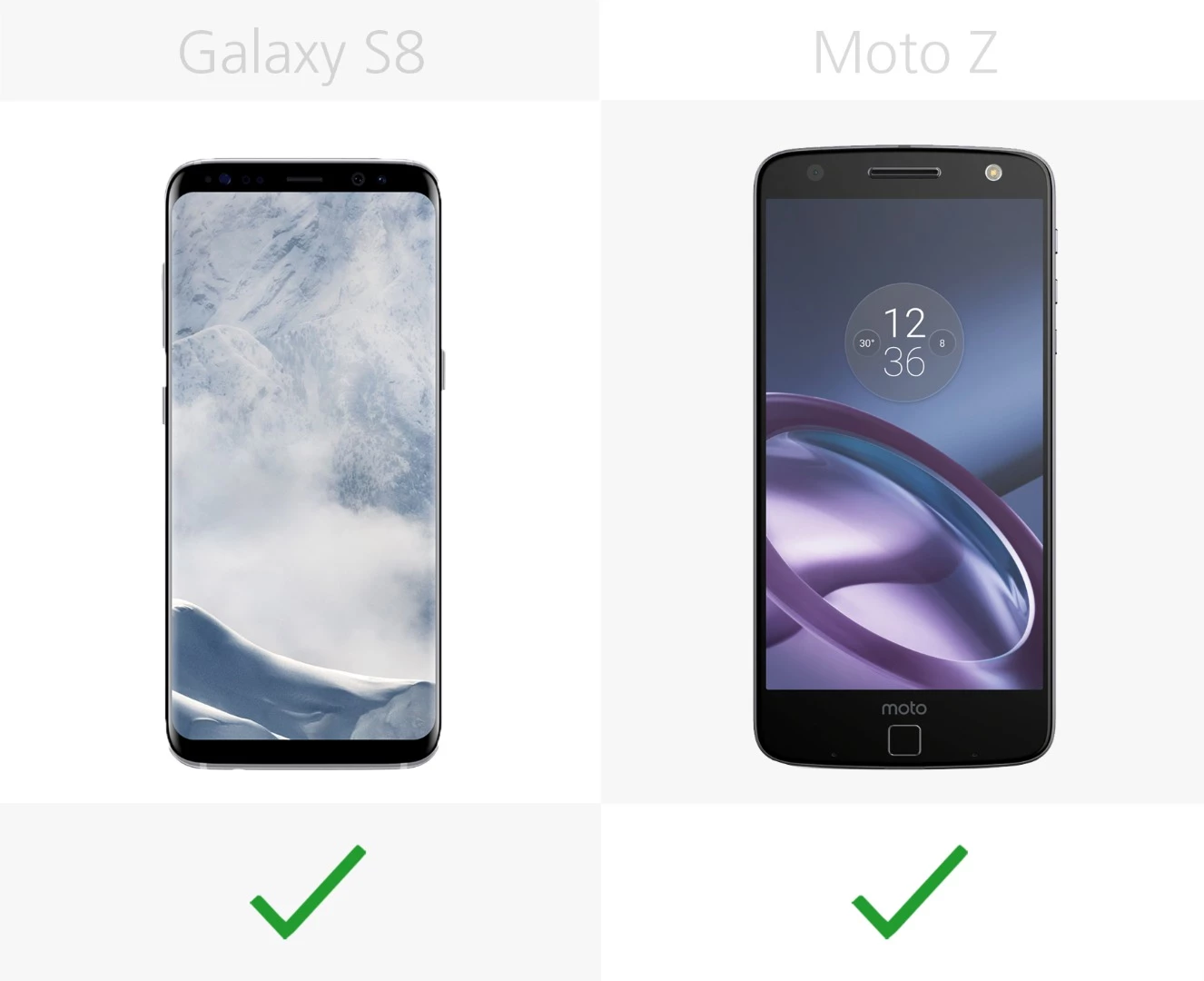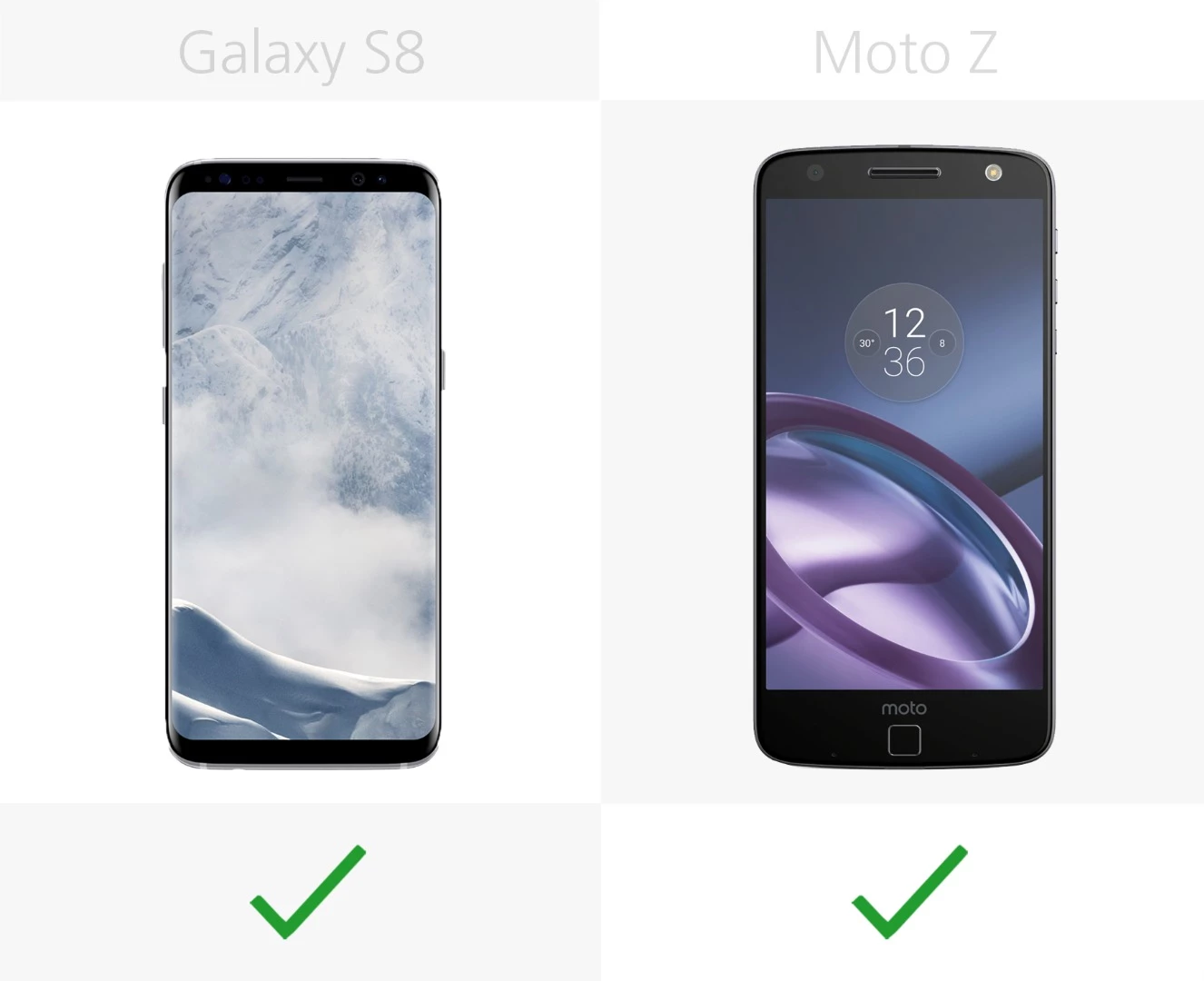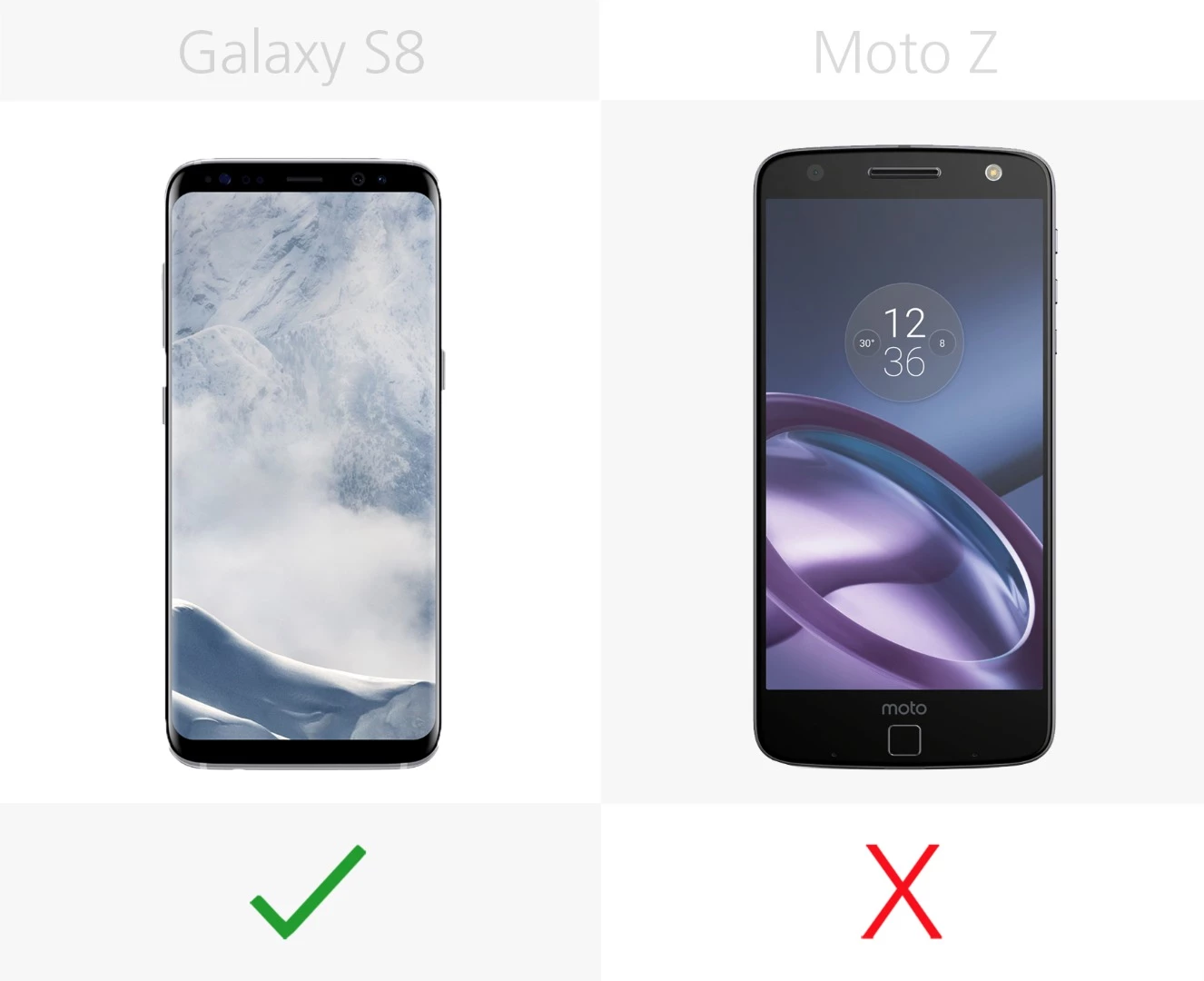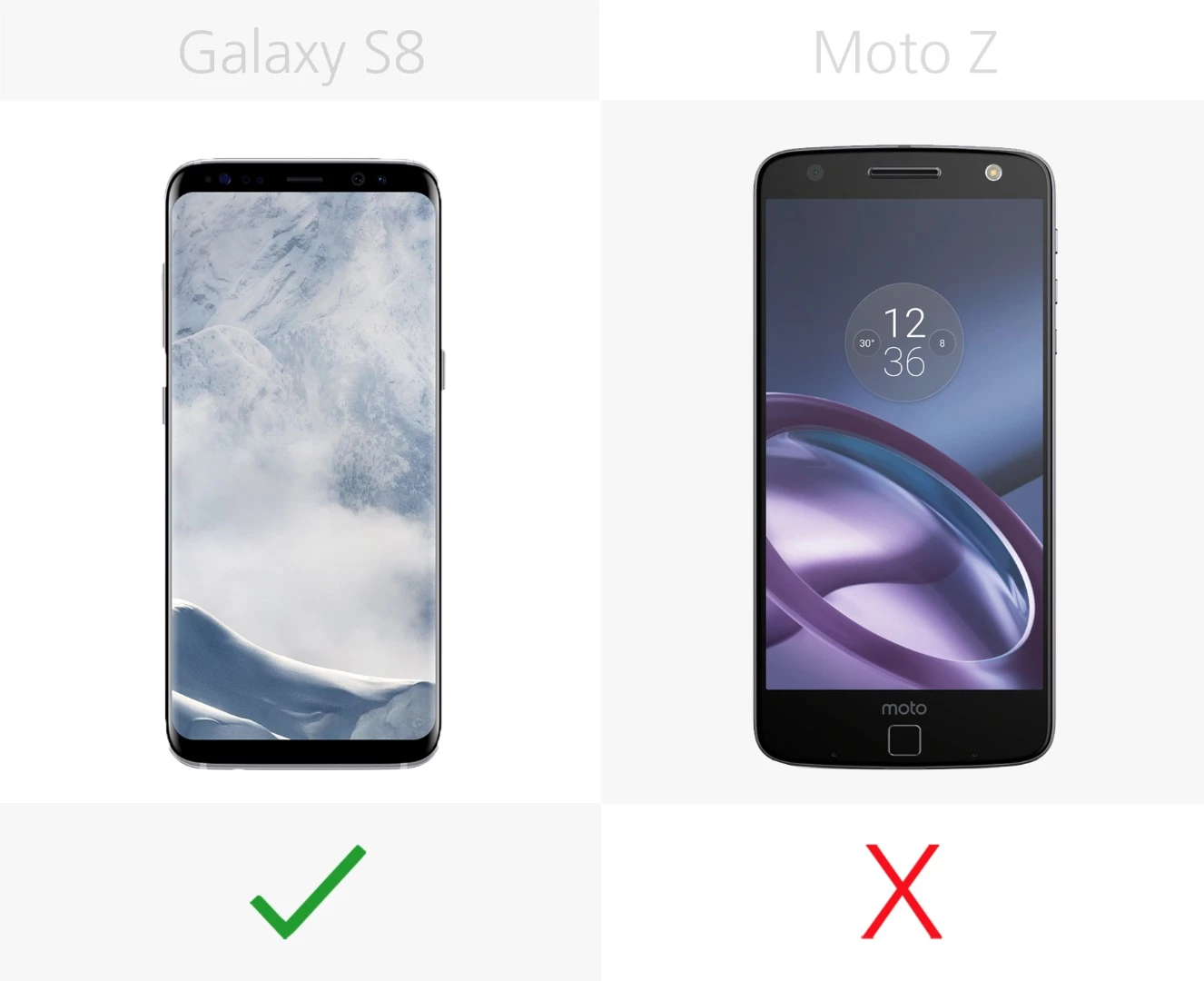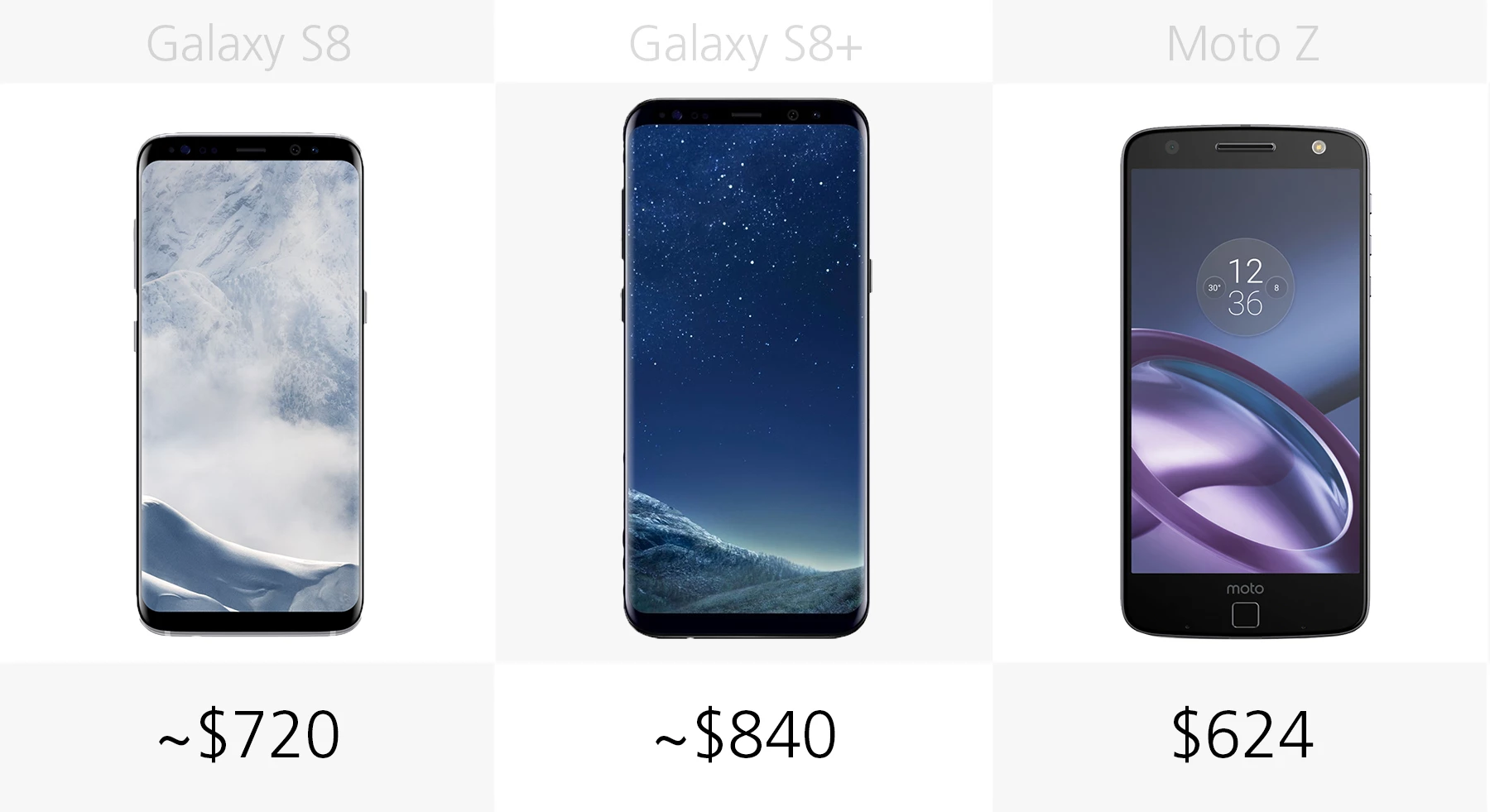Samsung's Galaxy S8 series and the Motorola Moto Z could all be strong choices for gadget lovers. The S8 and S8+ are high-end phones equipped with ample bells and whistles, while the Moto Z's modular approach lets you expand the style and function of your phone. Here's how their features and specs compare.
Size
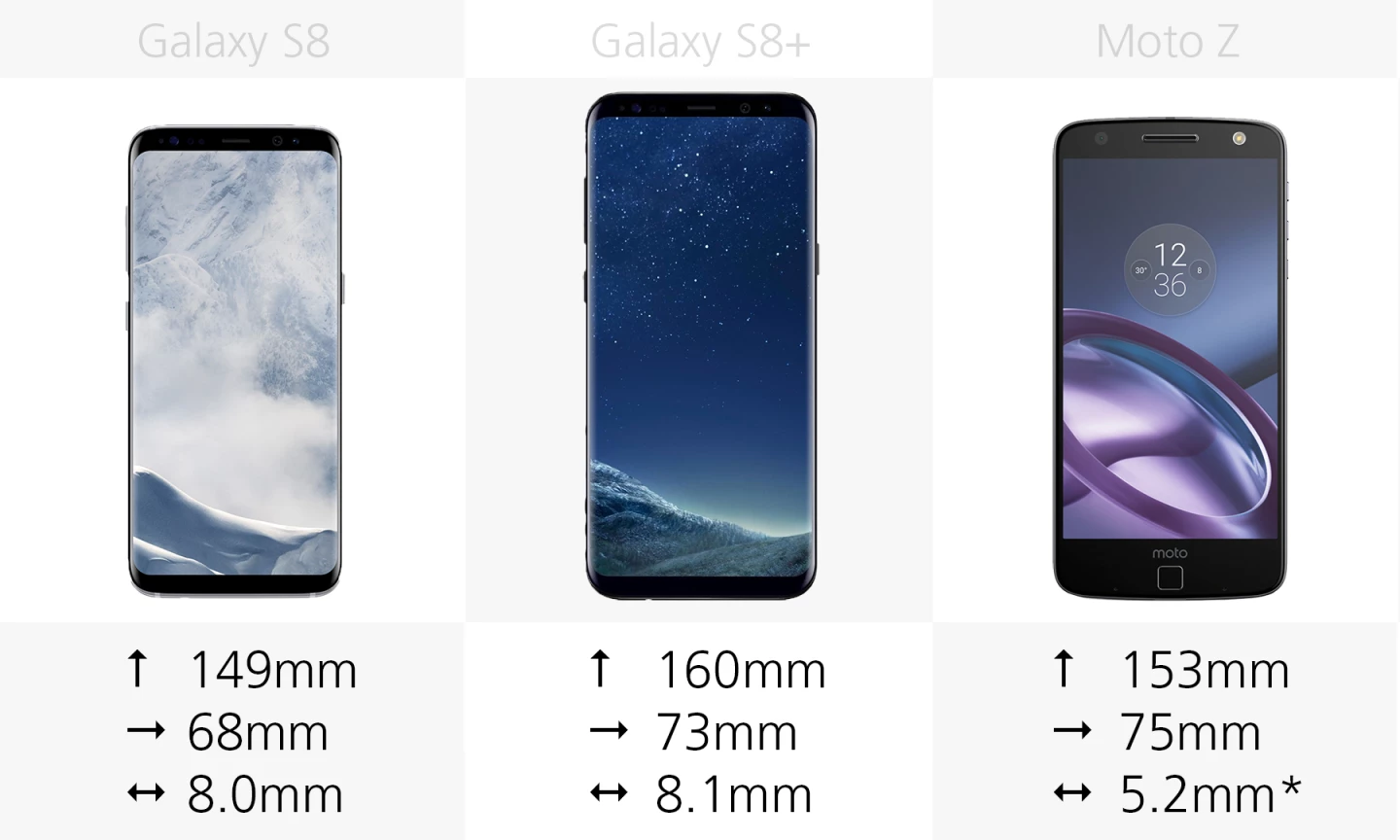
The S8 phones stand tall and narrow amongst other smartphones. Of these, the S8+ is the tallest, standing about 4-percent taller than the Moto Z and 7-percent taller than the S8. The Moto Z is razor-thin at 5.2 mm, but keep in mind that's without any of its accessories.
Weight
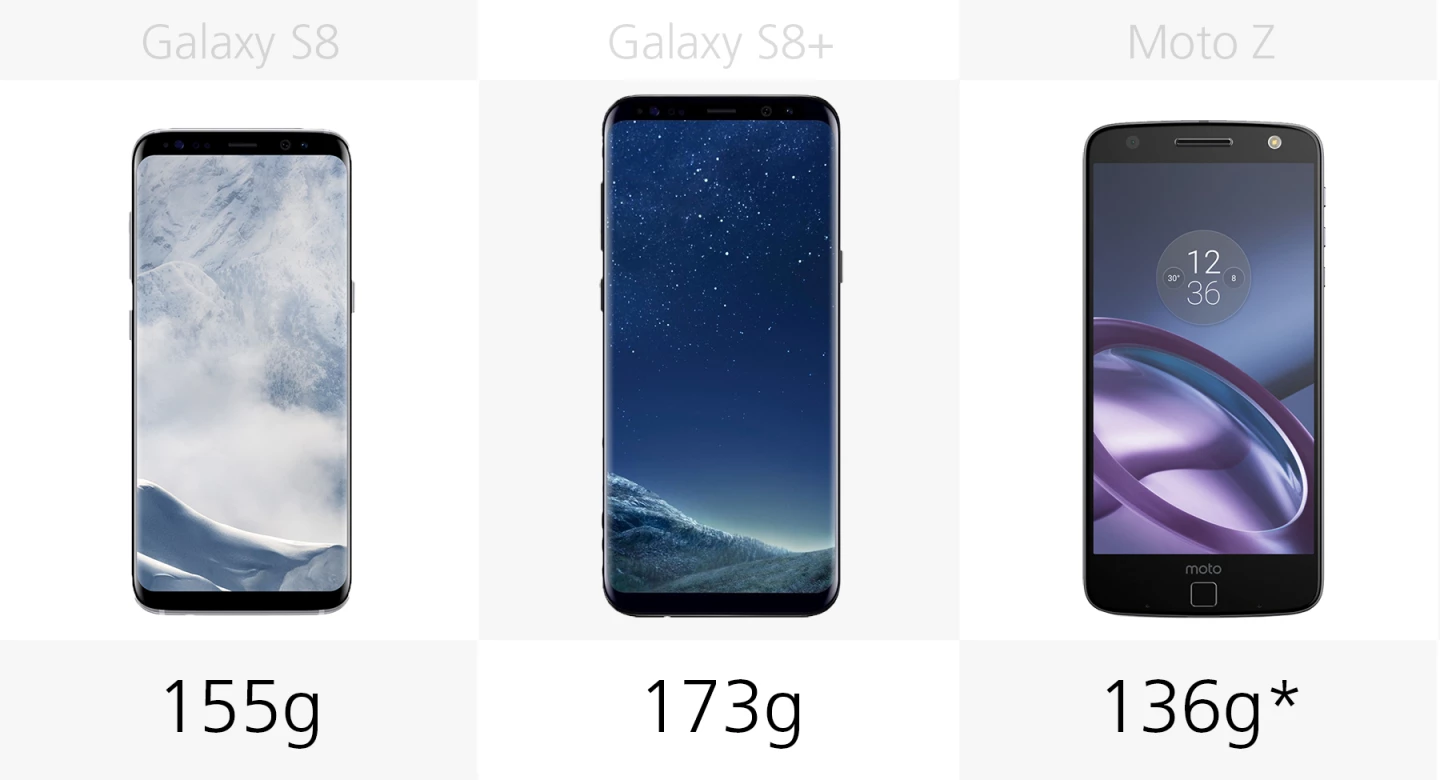
The Moto Z is also the lightest phone, as long as you weigh it without any mods.
Build materials
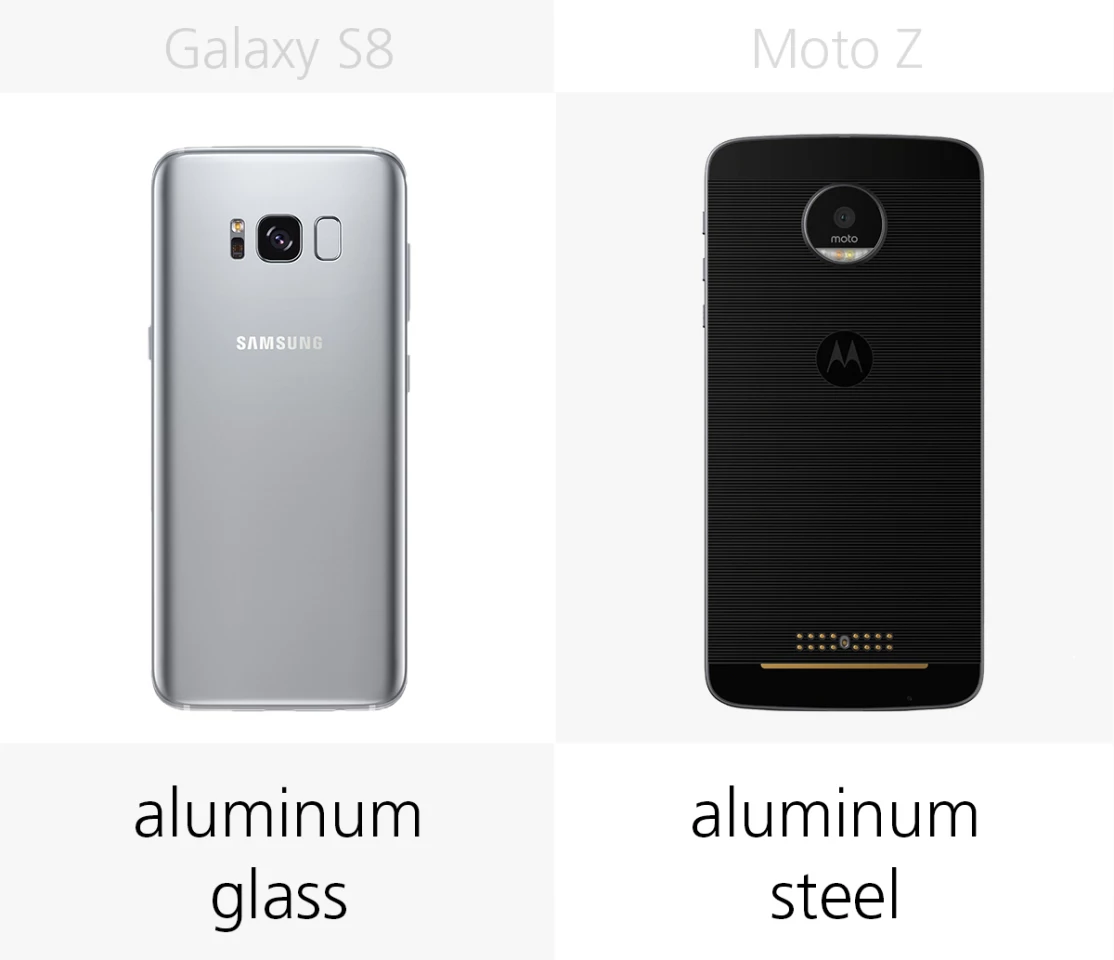
The S8 and S8+ have all-glass builds with the exception of a minimal aluminum frame. The Moto Z's body is aluminum and steel.
Modular
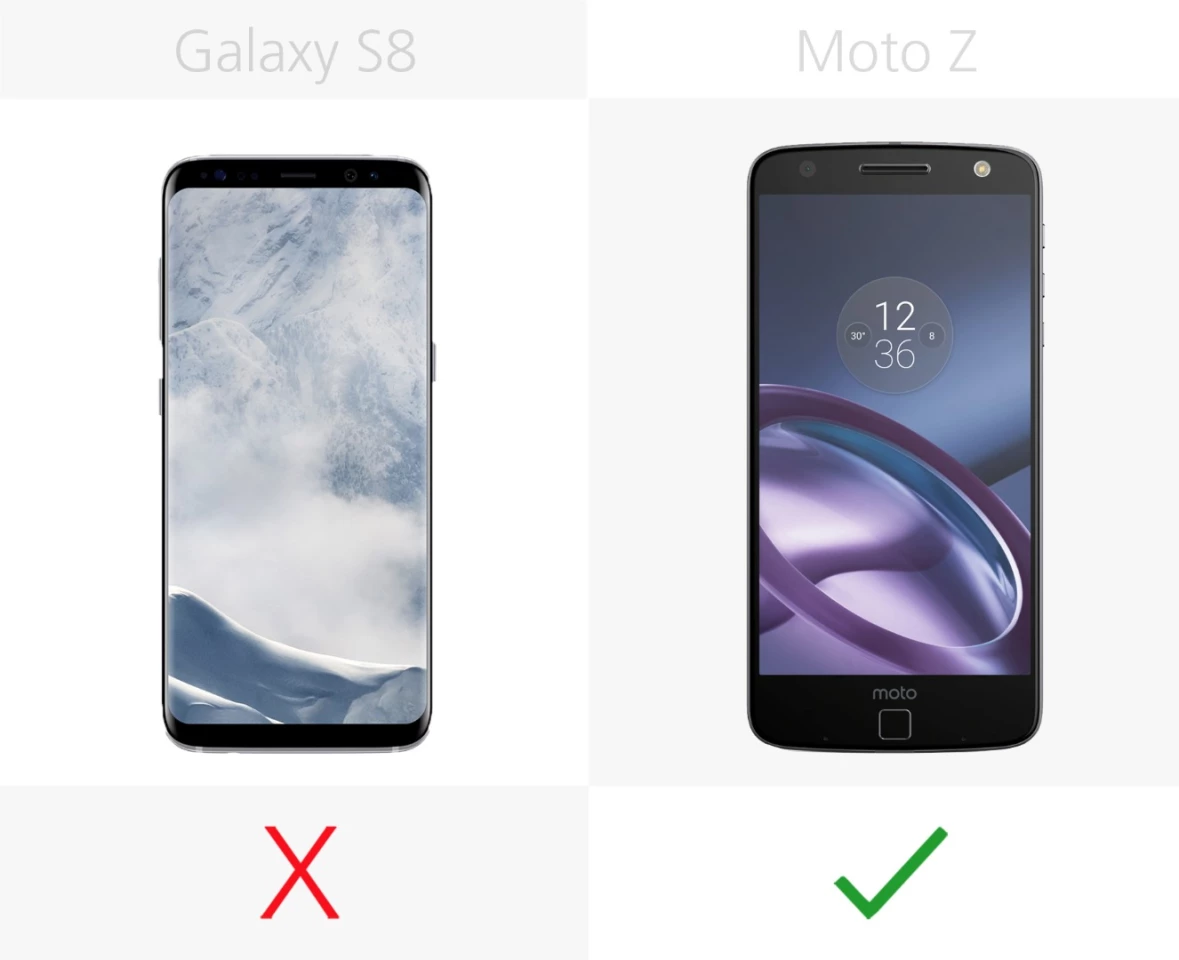
The Moto Z's modular approach is its killer feature. It has small, powerful magnets on its back for attaching "Moto Mods". These mods (sold separately) add new style and functions to the phone.
There are many options when it comes to mods. Some of the standouts? The Hasselblad True Zoom mod (US$300) gives your smartphone camera superpowers like 10x optical zoom. The Incipio Power Pack ($60) adds "up to 22 hours" of extra battery life as well as wireless charging capabilities. There are also Style Shells, which start around $20 and serve a purely cosmetic function, changing the look of your phone.
You can use the Moto Z without any mods if you want to, but if you're turned off by the modular approach, this isn't the phone for you.
Colors
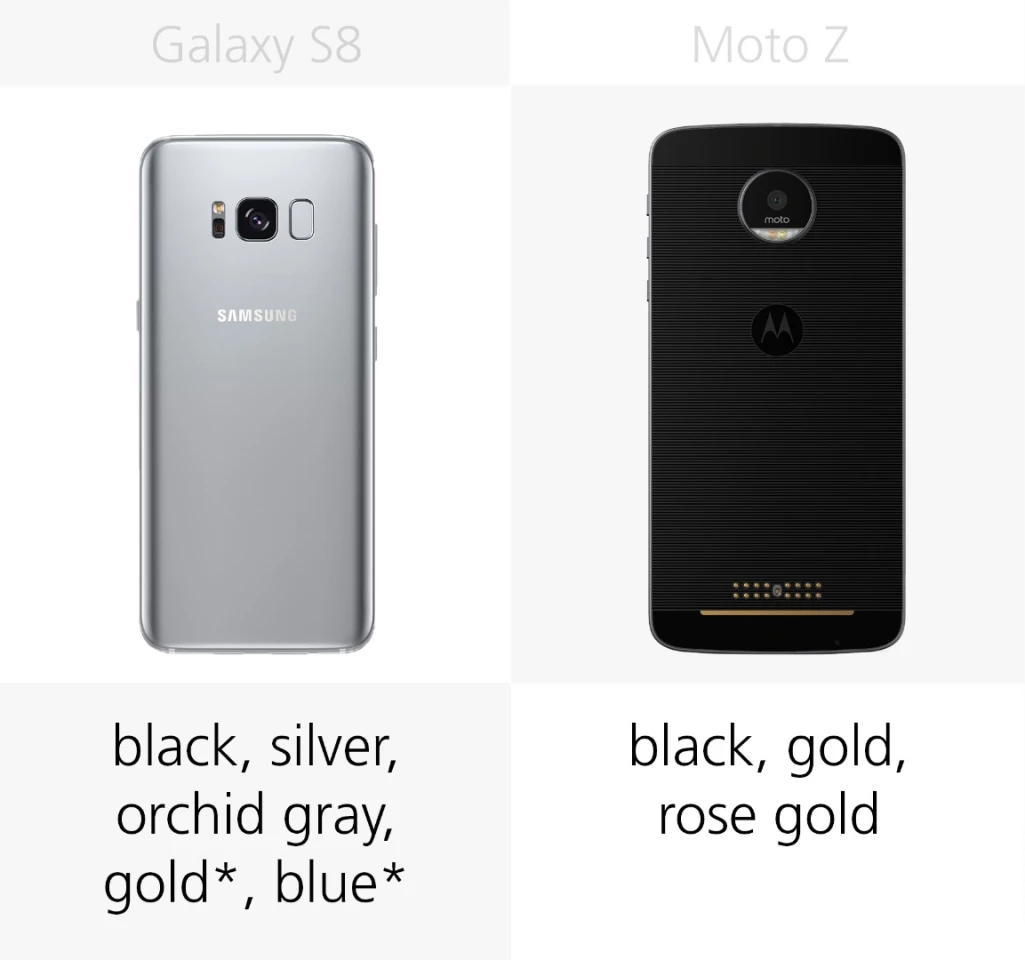
Samsung showed off five different color variants for the S8 and S8+ at the launch event, but only the black, silver and orchid gray will be available in the US at launch.
Water resistance
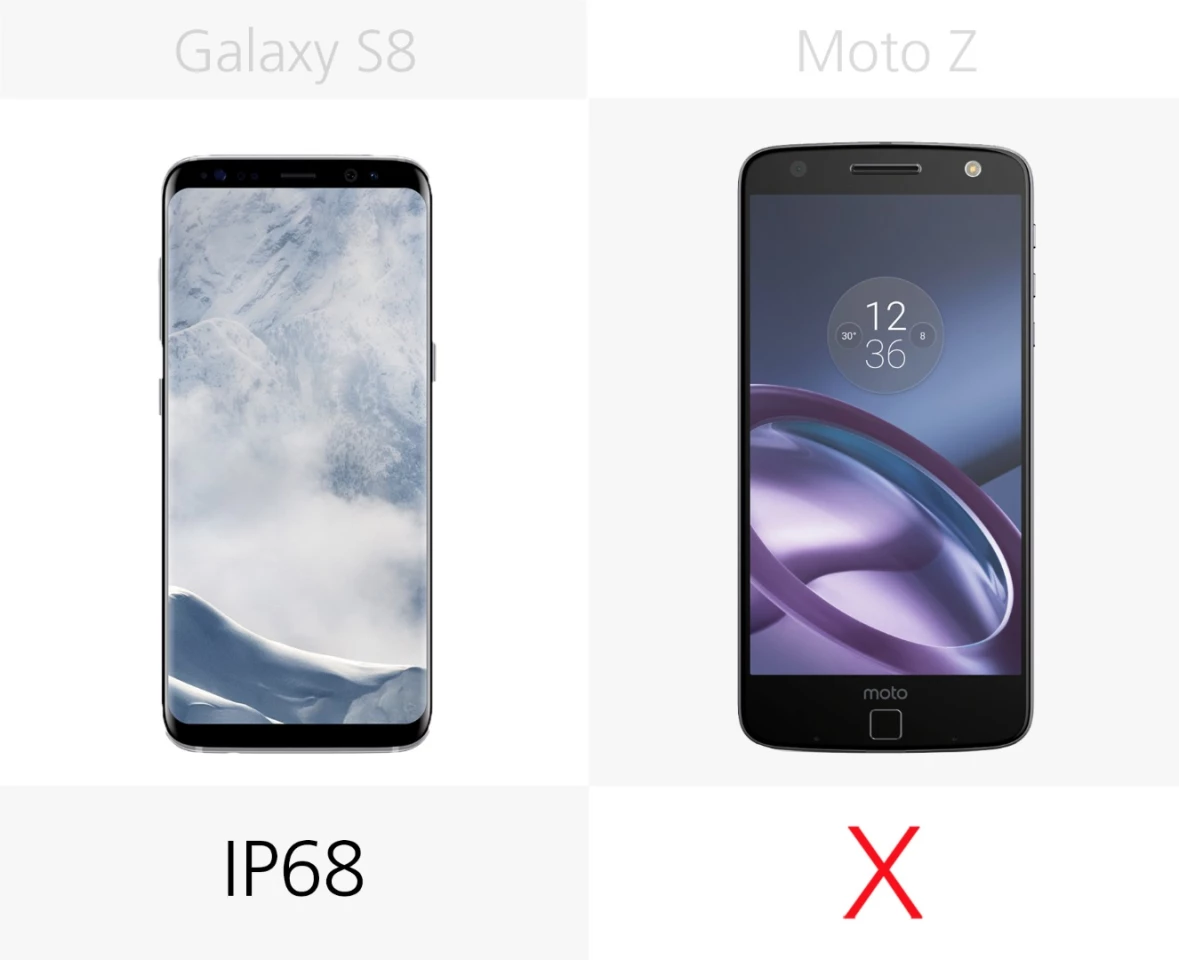
The S8 and S8+ have industry-topping IP68 water resistance, but the Moto Z is not similarly protected.
Display size
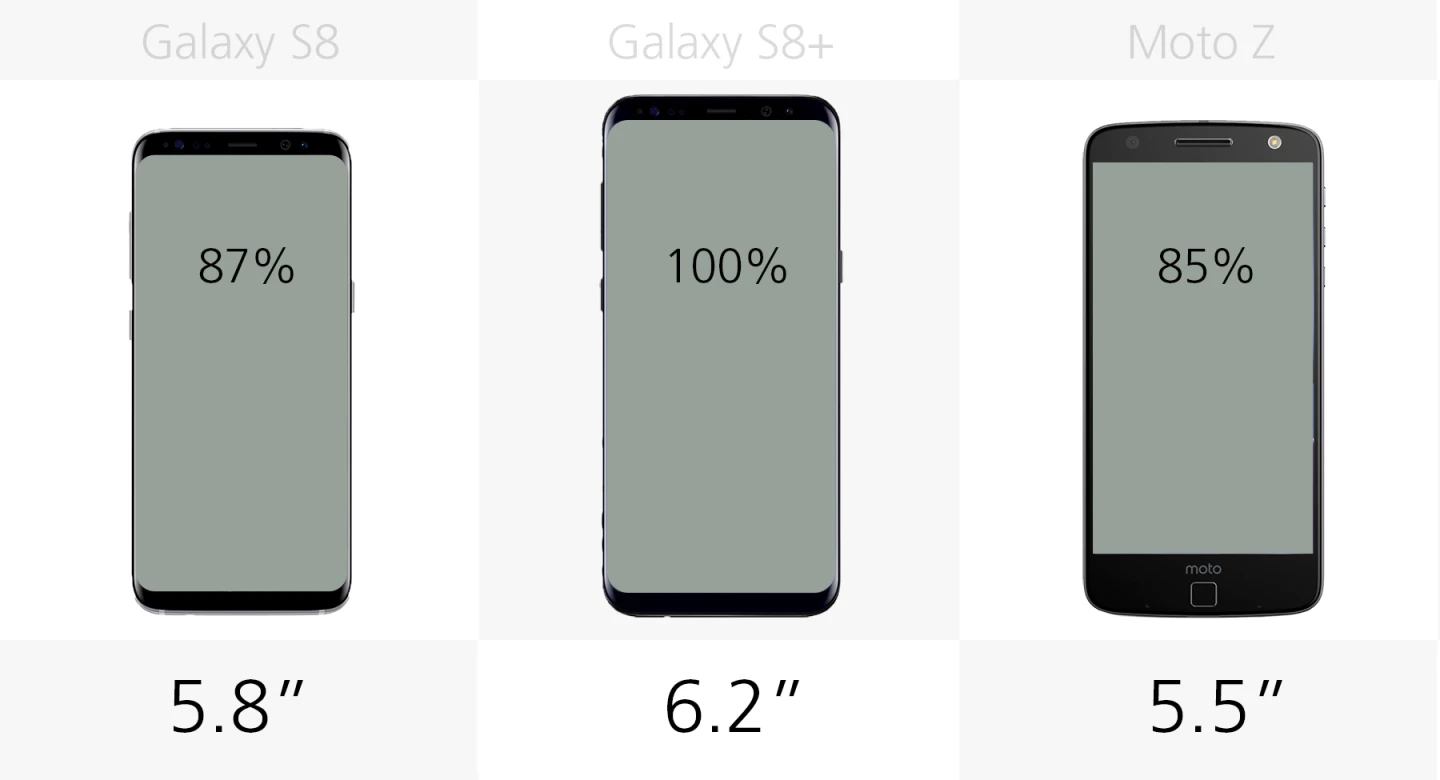
The massive Infinity Displays on the S8 series cover nearly the entire front sides of the phones. Even the smaller Galaxy S8 packs in more overall screen space than the Moto Z.
Display resolution
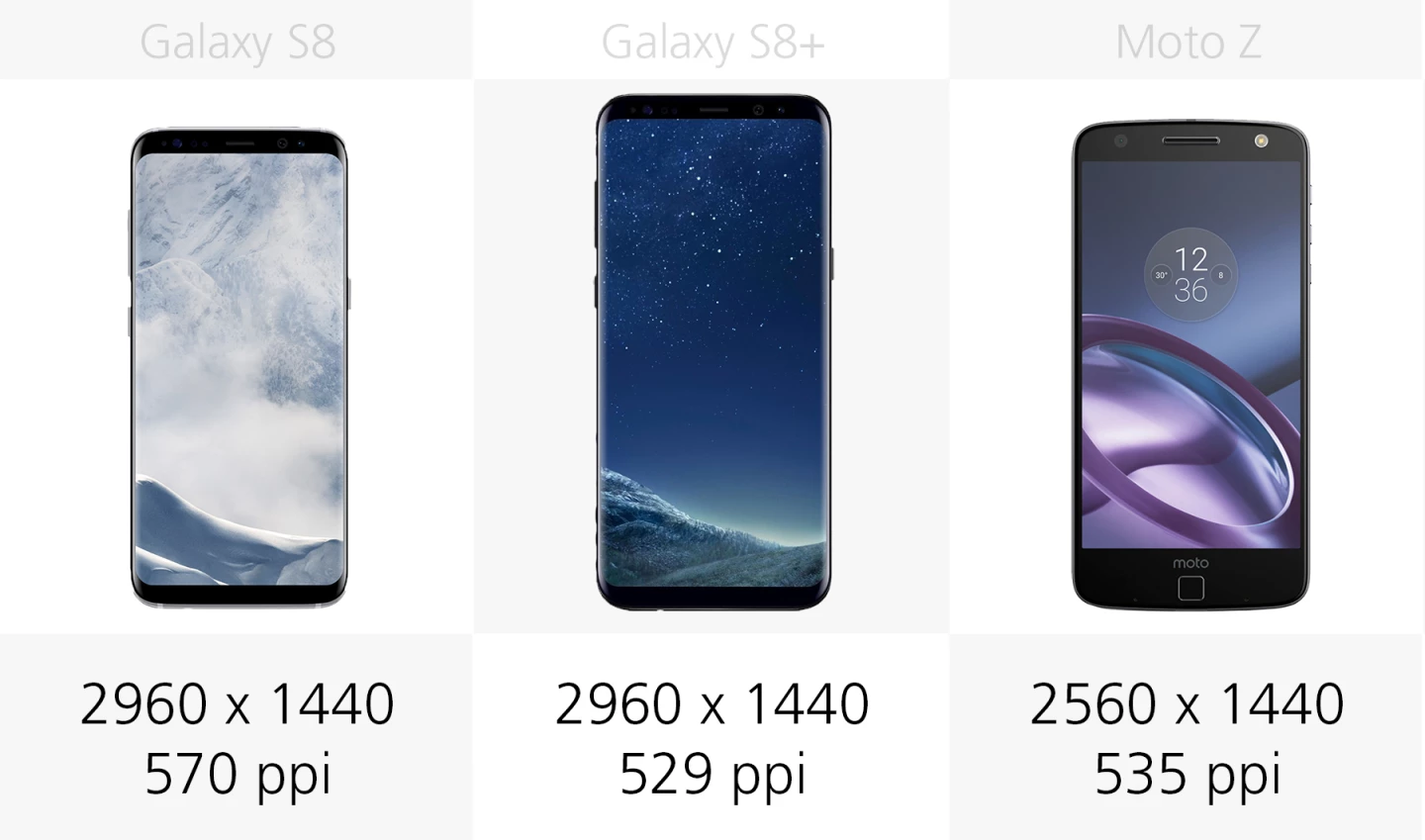
All three of these displays have impressive resolution. Technically, the S8 has the highest pixel density, but the difference is probably not immediately obvious to most people.
Display type
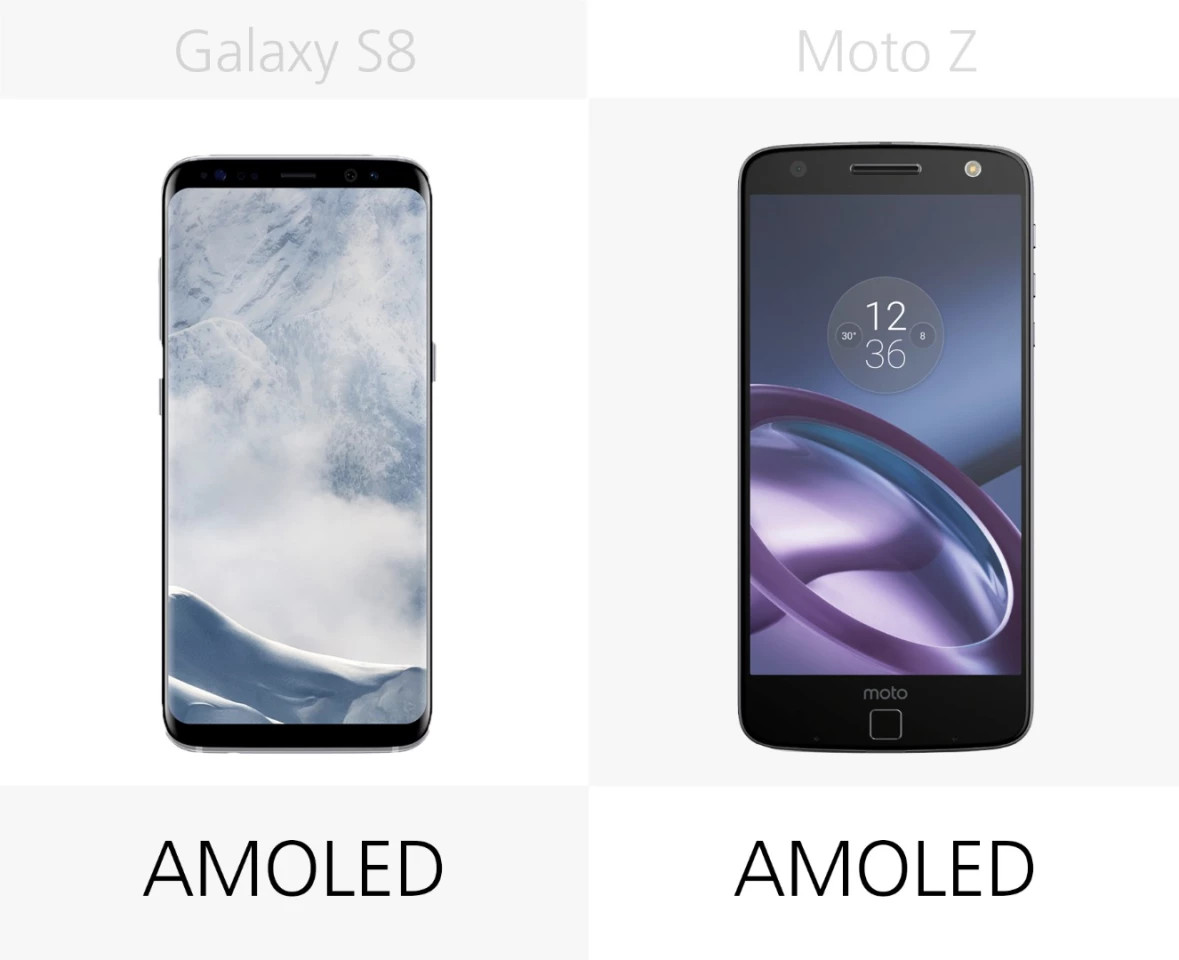
Both makers choose AMOLED over IPS display technology.
HDR display
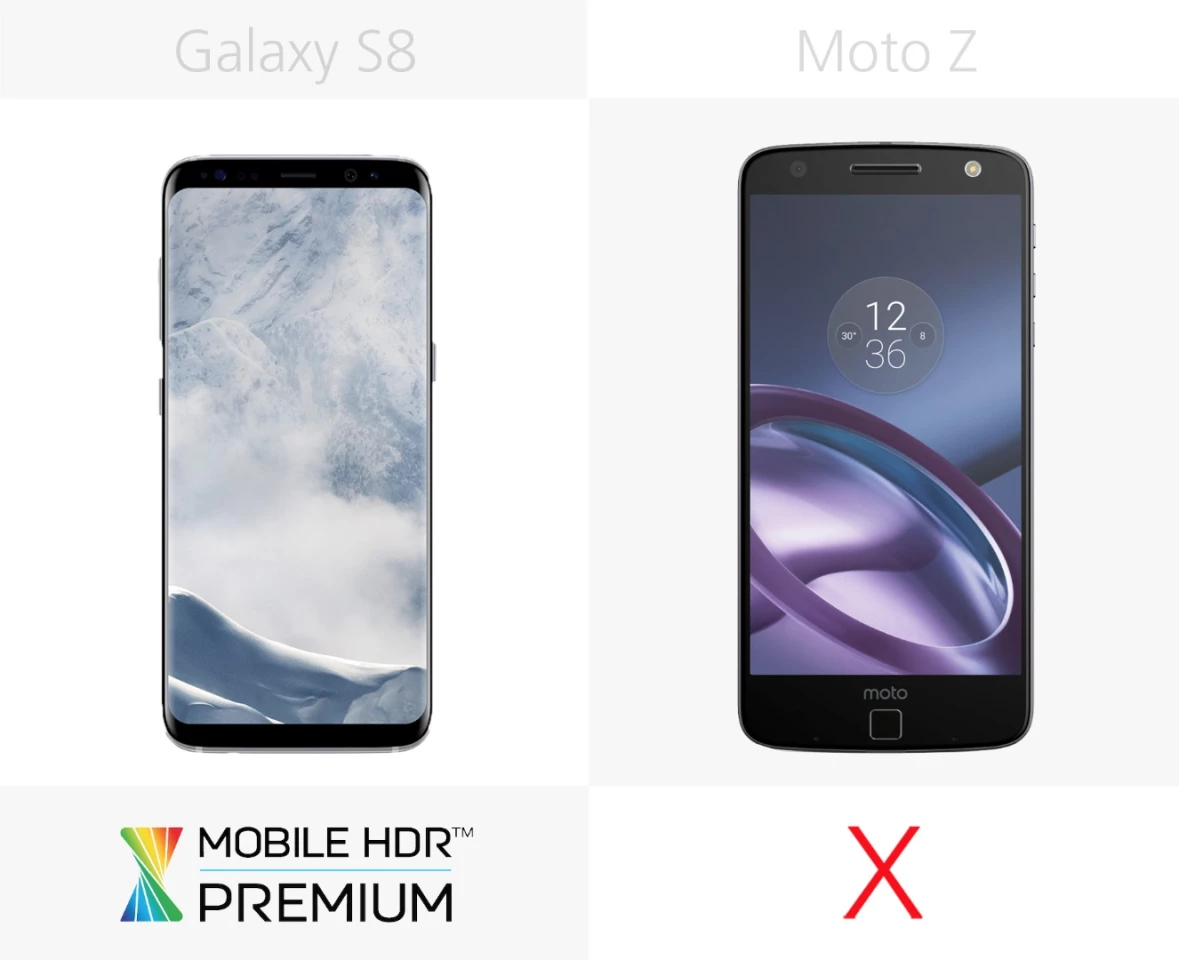
The S8 and S8+ are the first phones to be certified Mobile HDR Premium, which means they support HDR content.
Curved display
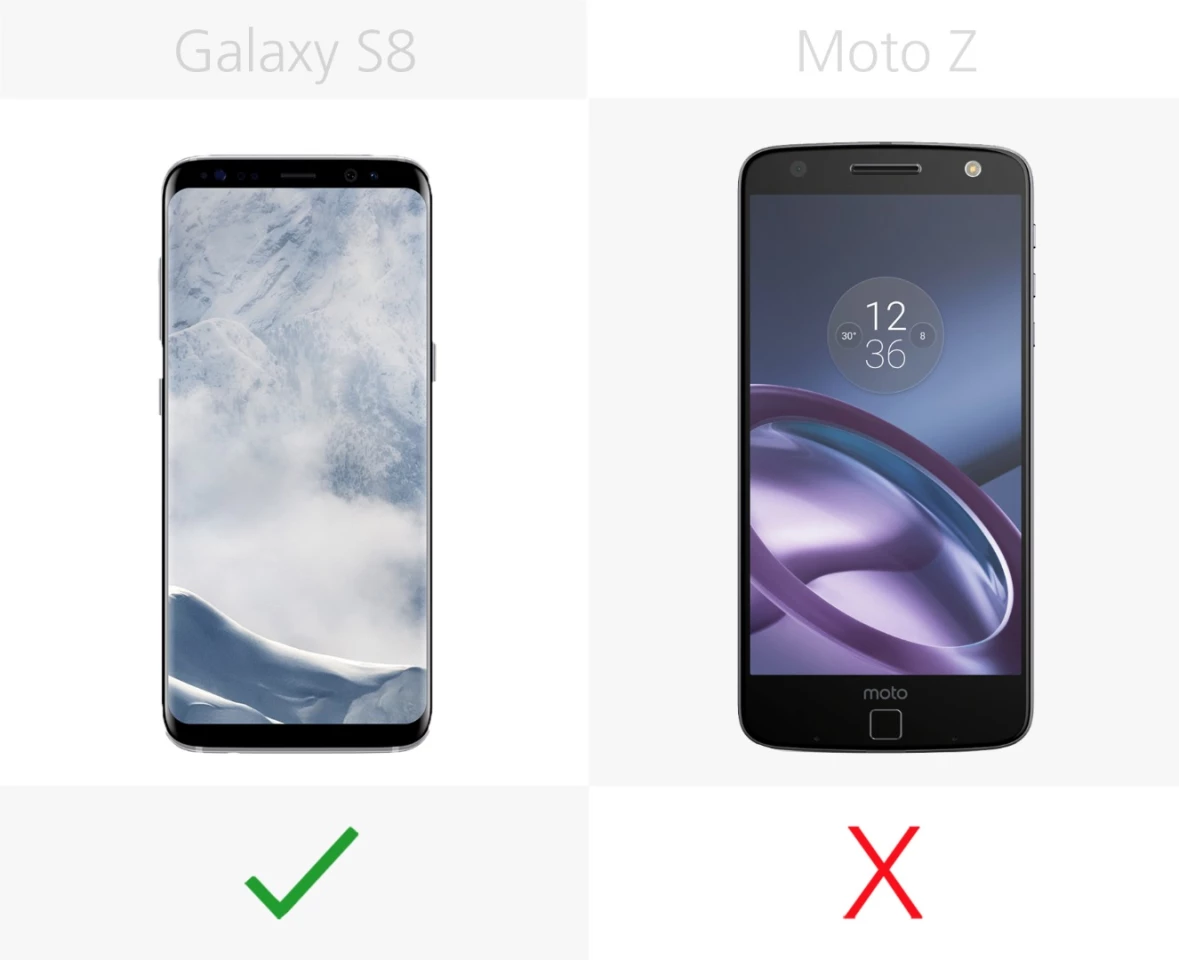
You may not be able to tell from a photo, but both Galaxy S8 series phones have curved displays that wrap around the rounded sides of the phone.
Home button
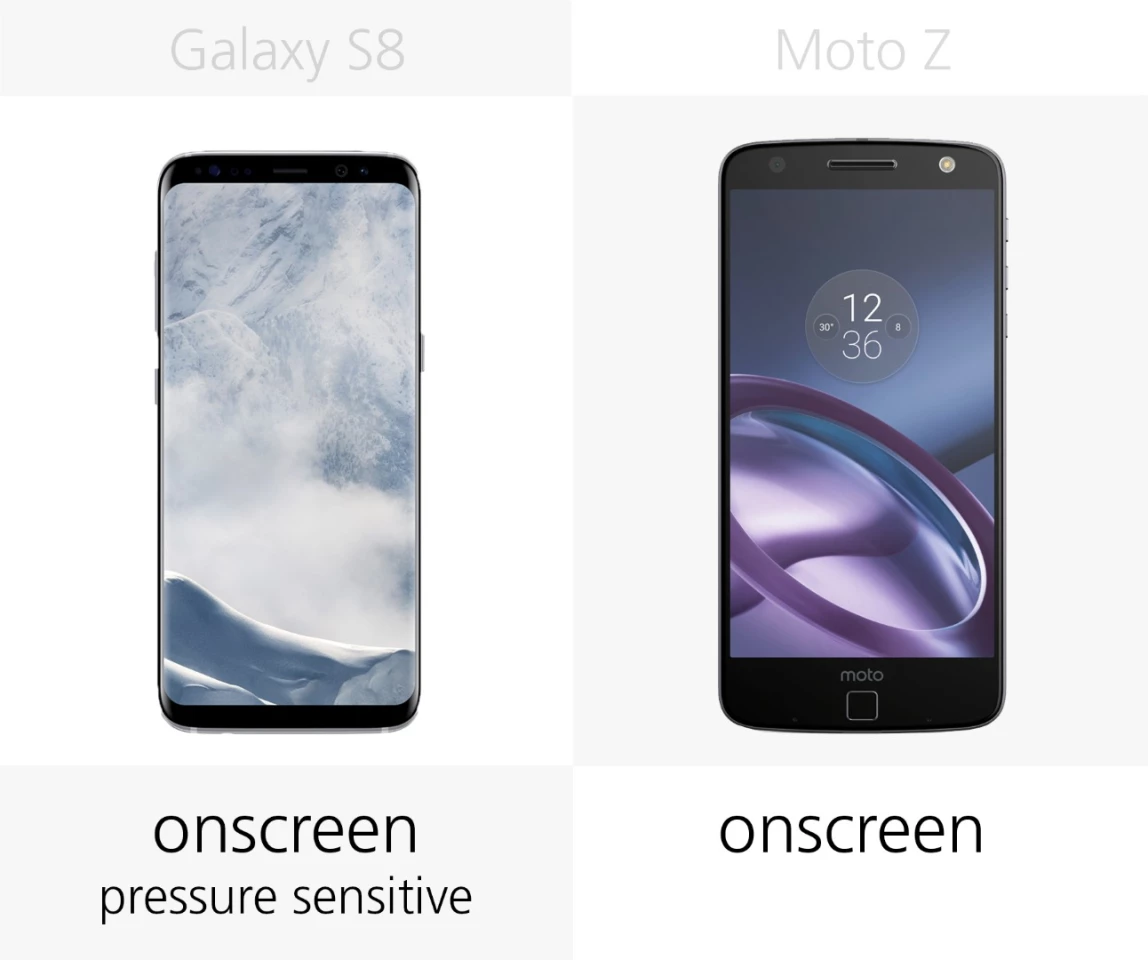
Both phones have onscreen home buttons.
At its launch event, Samsung indicated that the S8 home button does have some pressure sensitivity, but during our hands-on time, we couldn't fully tell how that pressure sensitivity is being put to use.
Fingerprint sensor

Both phones have fingerprint sensors. On the S8 and S8+, it's on the back of the phone, to the right of the camera lens. On the Moto Z, it's below the display.
Face recognition

Samsung plays up the convenience of its face recognition technology in quickly logging you into your phone. However, it may not be as secure as you'd think, and it seems to be similar to Android Nougat's "Trusted Face" feature.
Iris scanning
Samsung adds yet another biometric security measure, which we first saw in the ill-fated Note 7. Samsung's iris scanning seems to work more quickly now, but we'll test it more thoroughly in our full-length review.
Processor
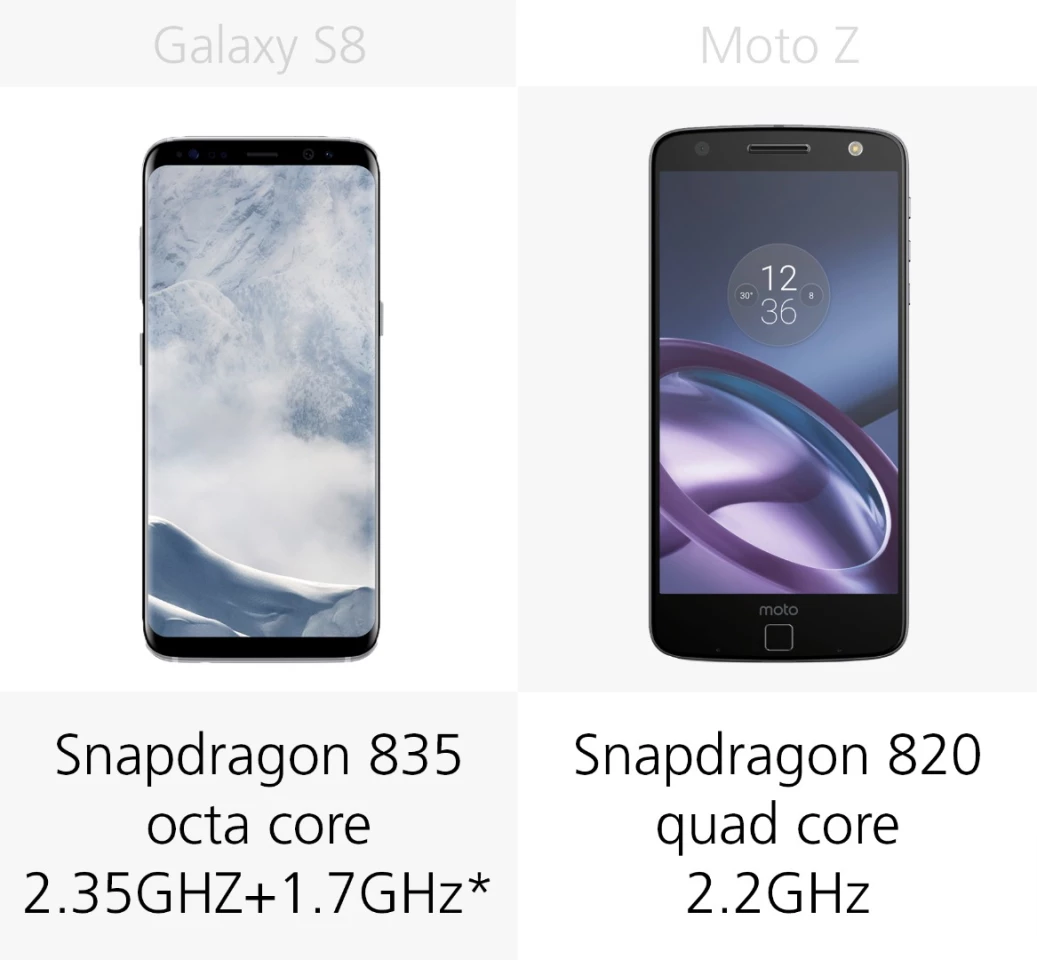
The S8 series includes the latest Qualcomm Snapdragon 835 chip in the US and other markets. Elsewhere, Samsung uses its own Exynos-branded processor, which has similar specs. The Snapdragon 820 in the Moto Z is now a few generations old, but won't be a slow phone.
RAM

Both phones have 4 GB of RAM.
Built-in storage
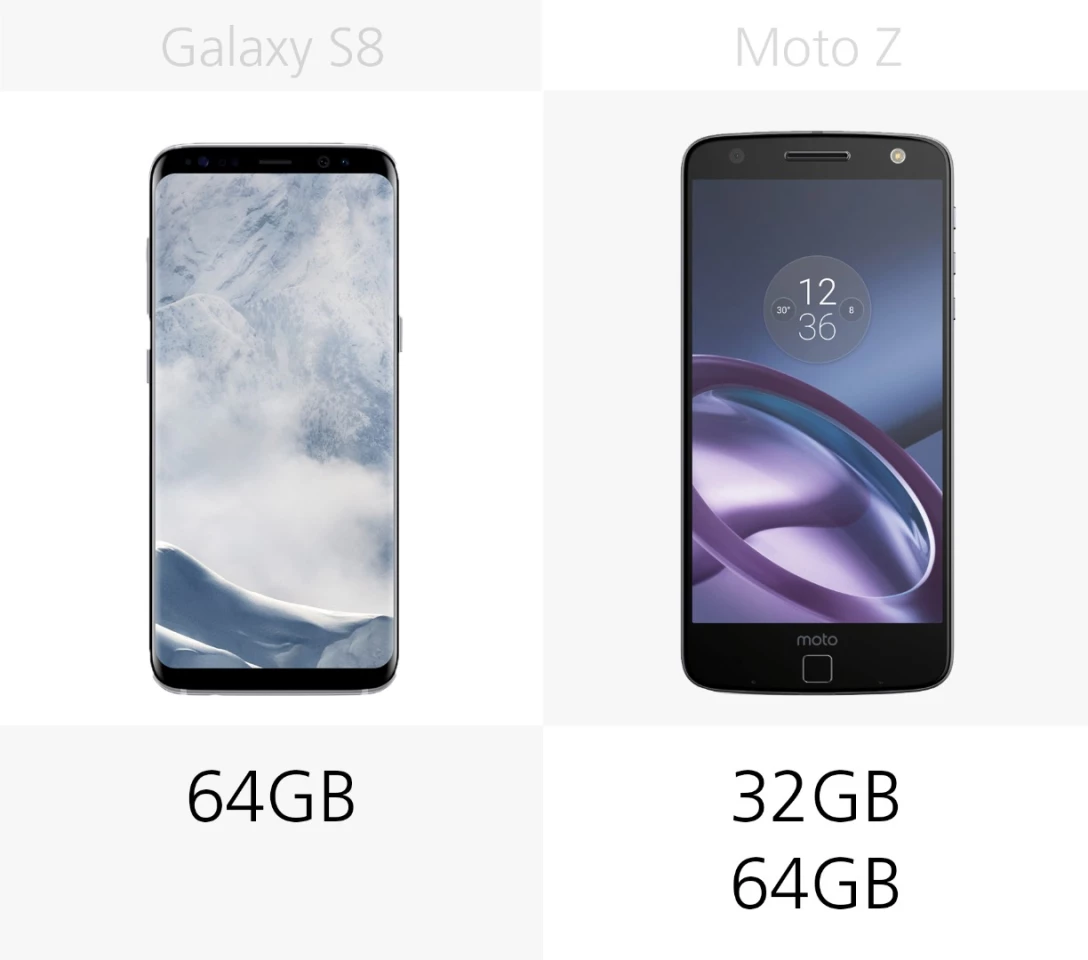
The S8 series is offered in one 64 GB size. The Moto Z comes in either 32 GB or 64 GB.
MicroSD
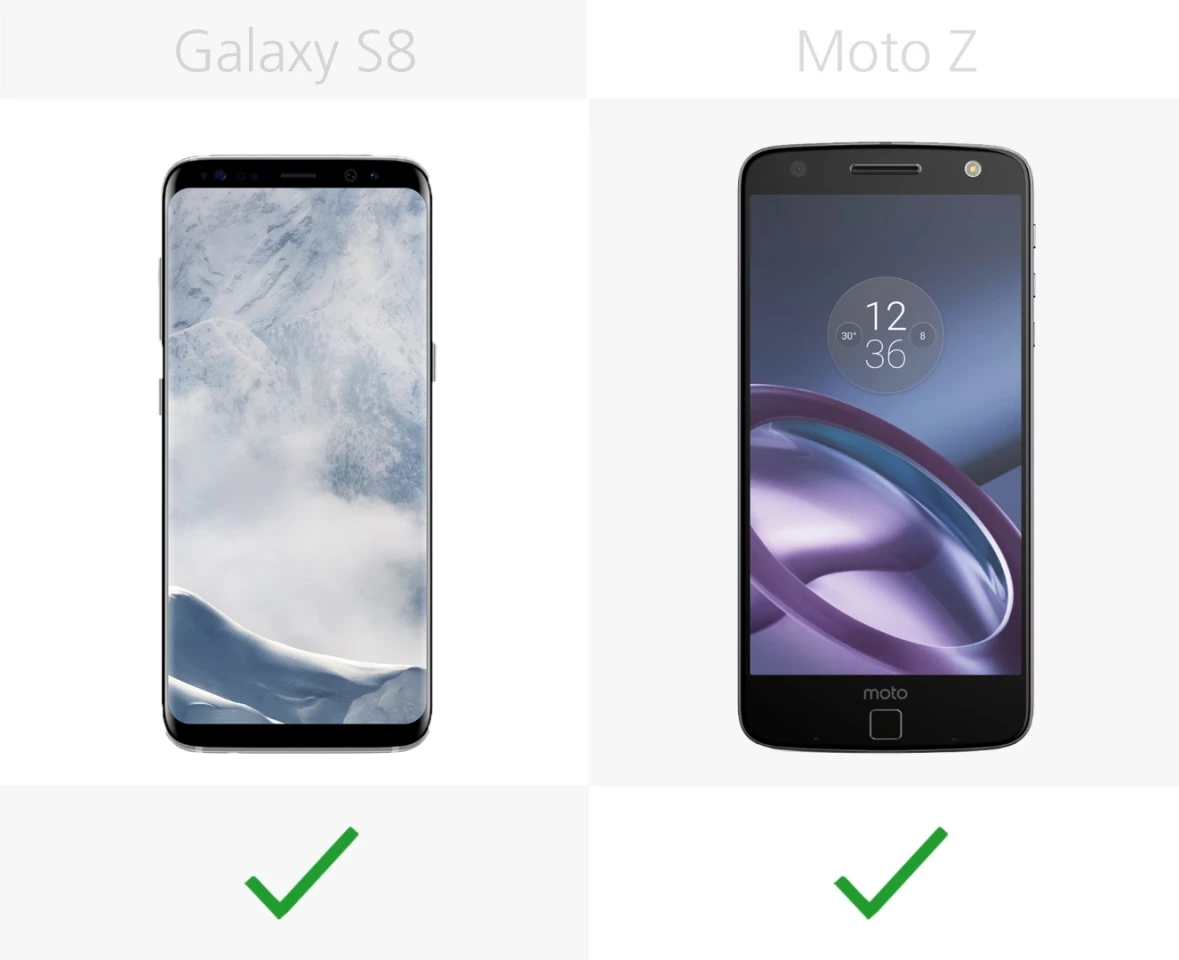
If space is a real concern, both phones have a microSD slot for expandable storage.
Headphone jack
Moto Z axed the headphone jack before Apple ever did. An adapter is included in the box if you want to keep using your favorite 'phones.
Bundled headphones

Samsung bundles a pair of AKG wired earbuds (sold separately for $99) with the S8 and S8+.
Battery

The Moto Z has the smallest battery capacity, but that's without any of its power-boosting accessories.
Fast charging

Like most Androids, these phones offer some fast charging capacity.
Wireless charging

The Moto Z does not have any built-in wireless charging ability, but it can be added with a mod. The S8 flagships support wireless charging (and even fast wireless charging), but it does require a sold-separately charging pad.
Camera megapixels

The Moto Z has an additional megapixel in the rear camera, but the front-facing selfie camera is sharper on the S8.
Camera aperture (rear)

A larger aperture on your smartphone camera can mean better low-light shooting and depth of field effects. Here, Samsung has a slight advantage. (The smaller the f-stop, the larger the aperture.)
Optical image stabilization (OIS)

Both cameras include optical image stabilization (OIS) to curb image blur caused by shaky hands.
Mobile payments
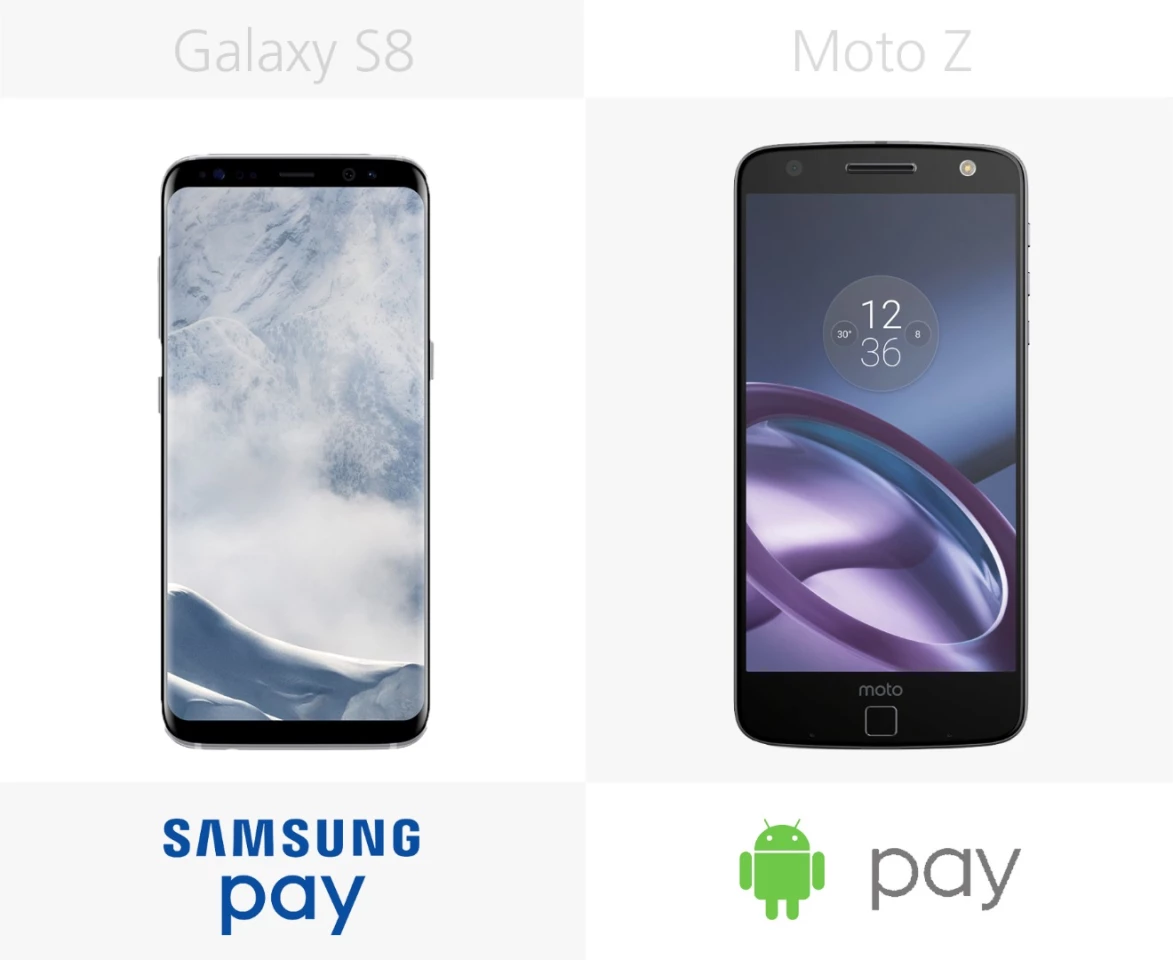
Samsung Pay, which works on the S8 series, could be more convenient than the Moto Z's Android Pay: Samsung Pay works with NFC and magnetic stripe terminals, so it could potentially be accepted at more places.
Voice assistant
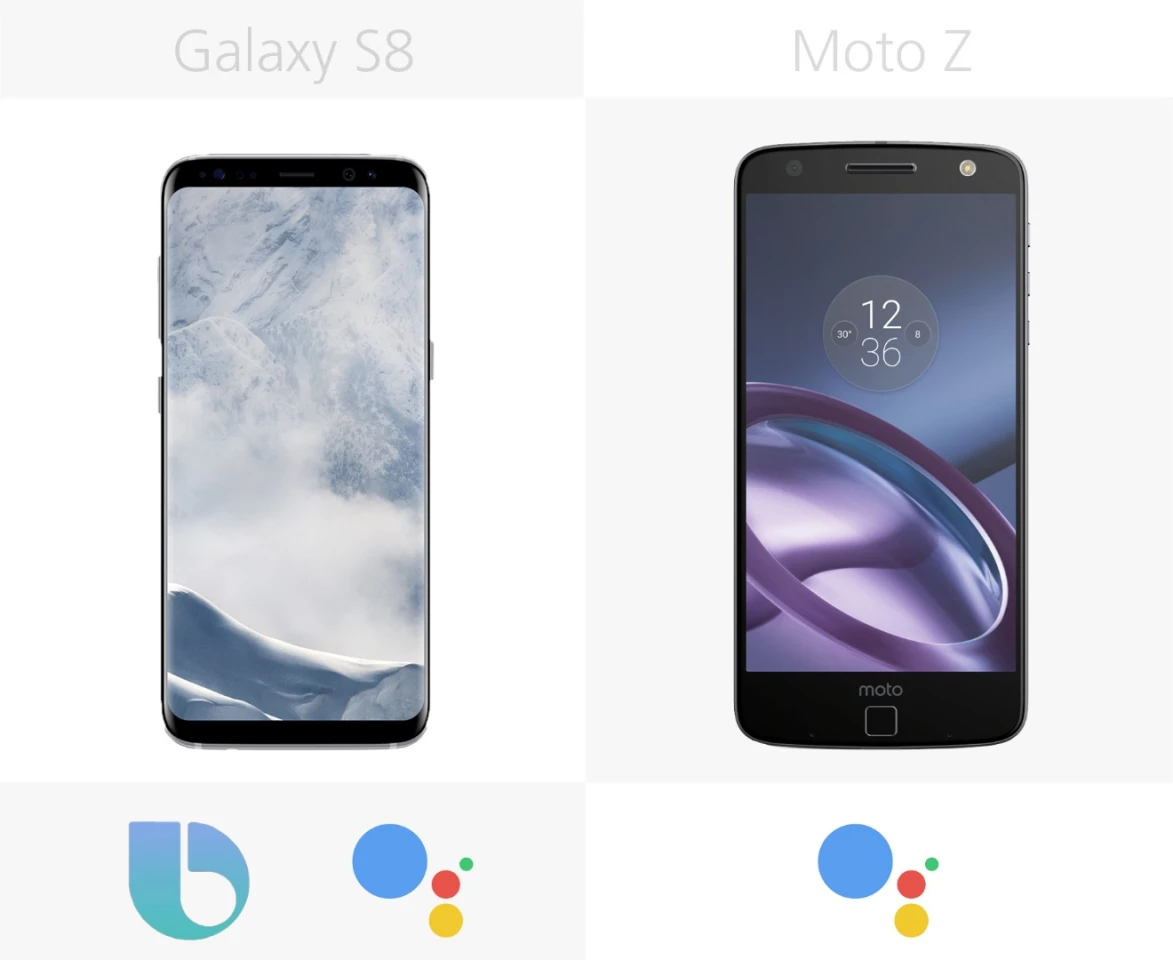
Google Assistant is available on both phones – the Moto Z did not launch with it, but Google has since rolled it out.
The S8 series also debuts Bixby, Samsung's new virtual assistant. There's a dedicated Bixby activation button on the side of the phone. However, Samsung recently said that Bixby's voice control features will not be up and running at launch.
VR headset
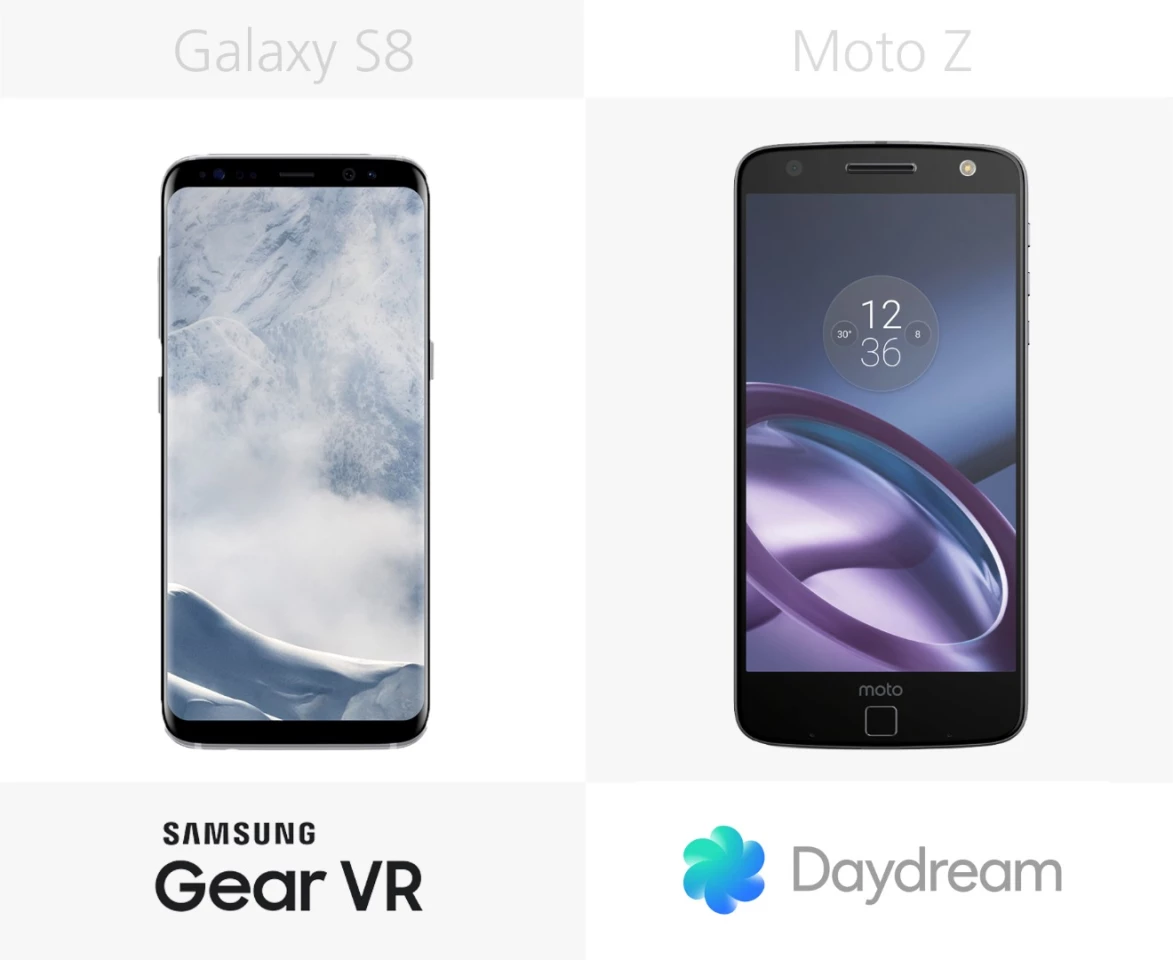
Both phones support mobile VR beyond basic Google Cardboard-type devices. The S8 series supports the Gear VR headset, and the Moto Z is Google Daydream-ready. Of the two, the Gear VR has a better content library.
Desktop dock

Samsung's DeX dock (sold separately) uses the S8 phones to power a desktop-like computing experience on a separate monitor, keyboard and mouse. At one point, Motorola showed off a similar dock for the Moto Z, but that dock has yet to make it to market.
Release

By the time the S8 series starts shipping on April 21, the Moto Z will have been around for the better part of a year. We'll likely see a follow-up (Moto Z2?) within the next few months, perhaps at Lenovo Tech World.
Software
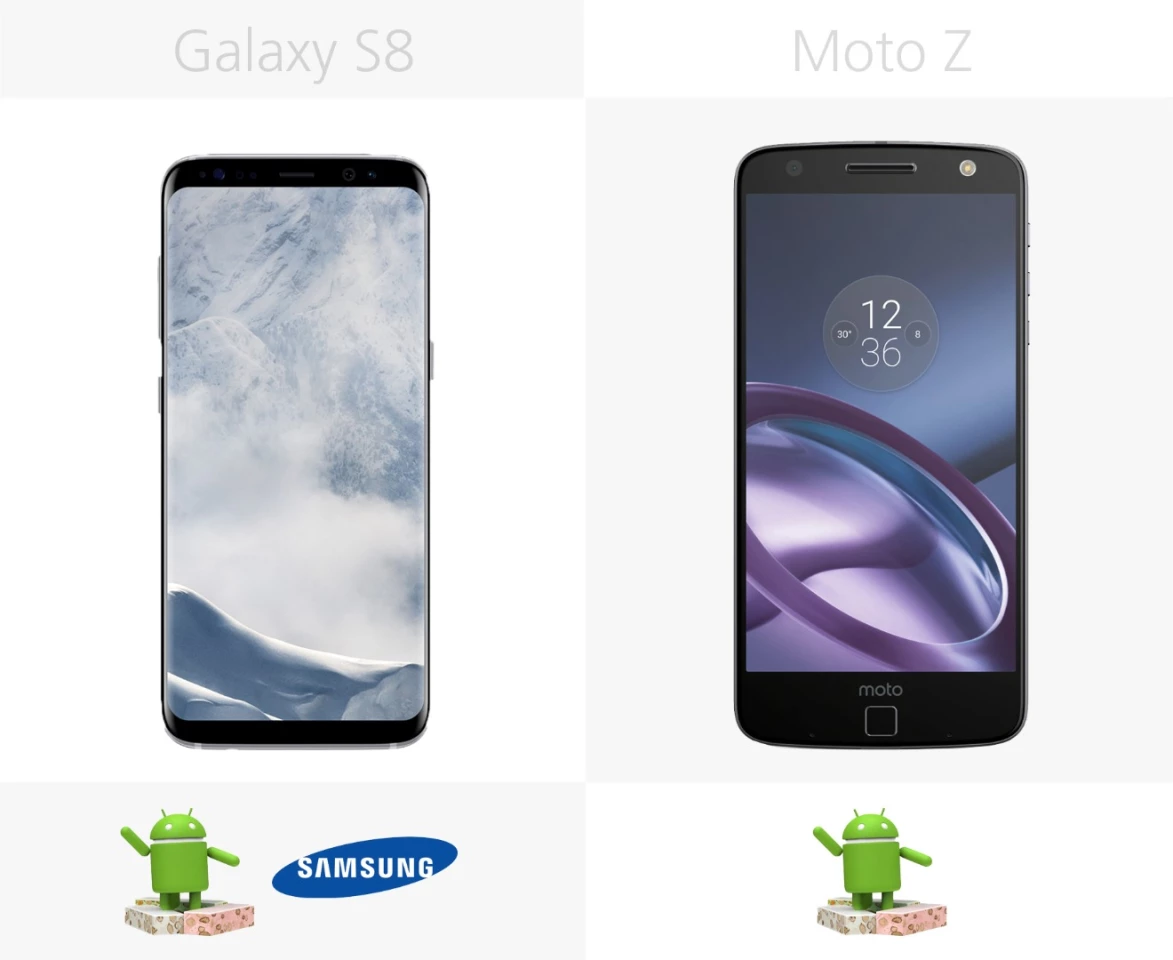
The Moto Z launched with Android Marshmallow, but the Nougat update has been rolling out. Its version of the software is near-stock. The S8 series runs Android Nougat with Samsung's TouchWiz UI skinned over it.
Price

Samsung prices vary according to payment plan and carrier, but count on paying top dollar for these premium flagships. The S8 starts around $720 and the S8+ comes to around $840.
The Moto Z is a not-cheap $624 on its own, but keep in mind that mods are sold separately and can cost a pretty petty. When all is said and done, your Moto Z set-up could far surpass the price of an S8 flagship.
For more info, check out our full-length review of the Moto Z, as well as our hands-on impressions of the soon-to-be-released S8 series. We'll post full length reviews of the S8 and S8+ in due course.



